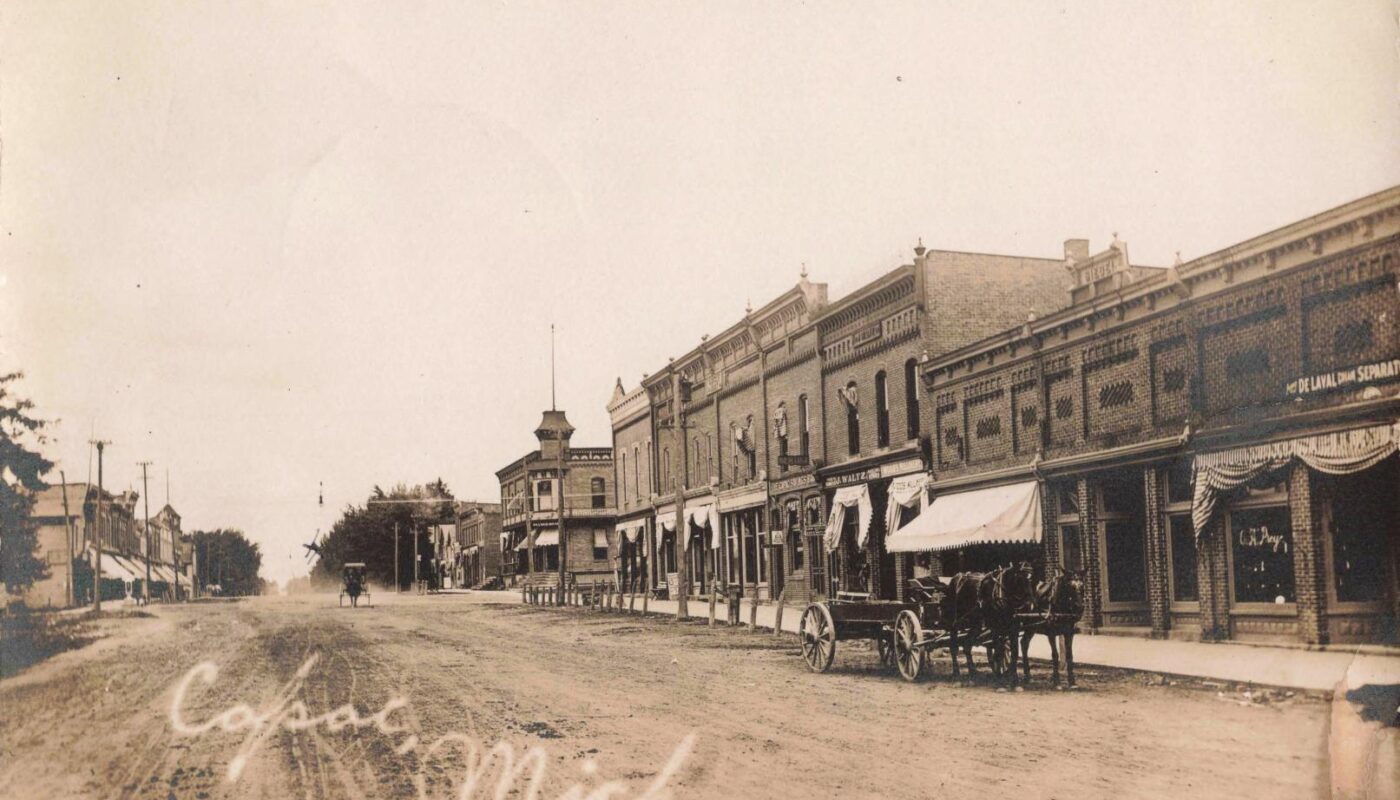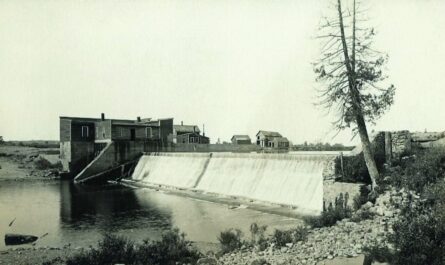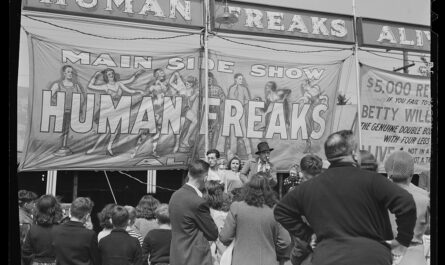Step back to 1912 Michigan! Our new 3-minute mini-documentary takes you to historic Capac Michigan – from the grand Palmer House hotel to a steam train’s arrival at the Capac depot, and even a dramatic run on the village bank on June 17, 1912. See busy cattle pens, the chicory mill, and Main Street shops come alive. Packed with names, dates and vintage photos, it’s perfect nostalgia for history buffs 55+ in Michigan.
Railroad and Hospitality of Capac Michigan
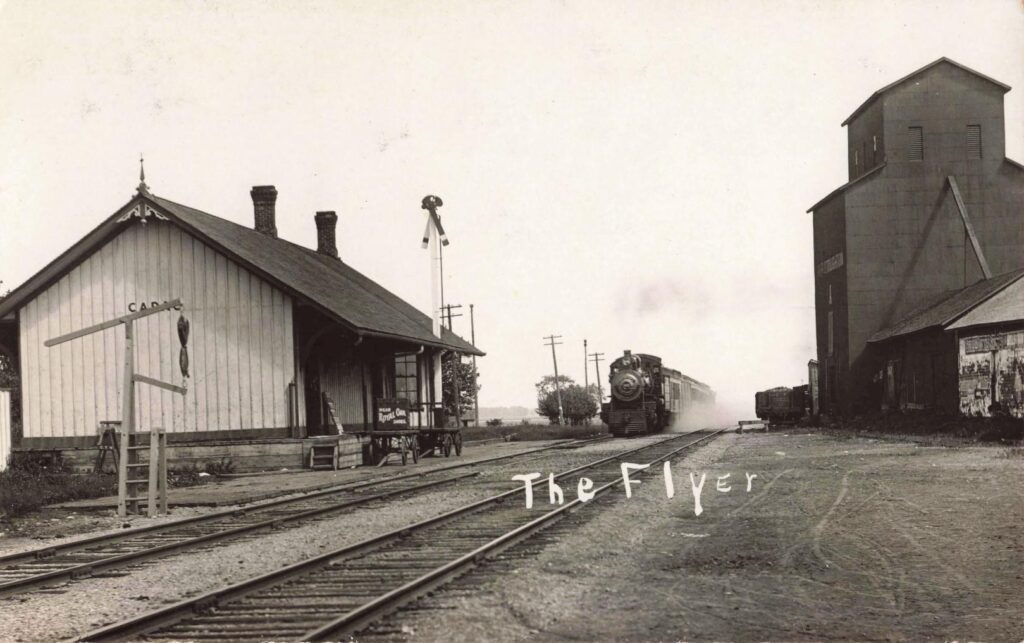
At dawn in 1912, the little village of Capac, Michigan, stirred awake to the whistle of the Grand Trunk steam engine. The railroad had arrived in 1866, placing Capac on the busy main line between Port Huron and Flint. The arriving “Flyer” passenger train was a daily spectacle, its black locomotive roaring into the depot as locals gathered on the platform.

Across Main Street from the depot stood the stately Palmer House hotel – a new 3-story brick building by 1912 – welcoming travelers and businessmen. On early postcards one can see horse-drawn wagons parked outside, travelers lingering on the porch, and the rustic boardwalks lining the street. This junction of tracks and tavern meant capac’s life circled around trains and travelers.
Bank Crisis of 1912
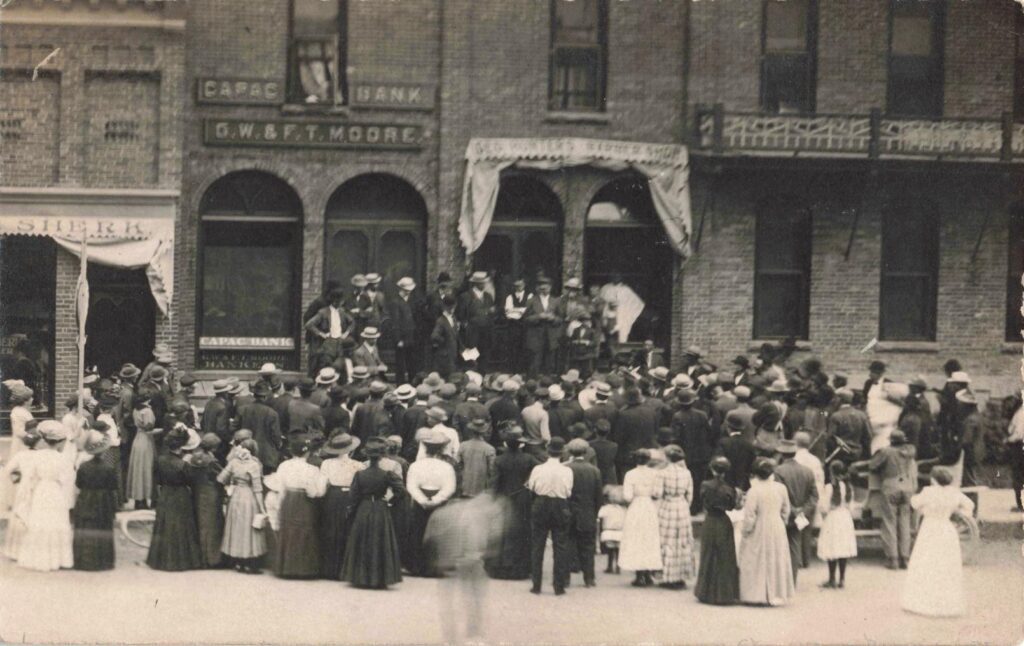
For most days, Capac’s State Savings Bank (founded in 1898) quietly handled deposits and loans for farmers and shopkeepers. But on Monday, June 17, 1912, that calm was shattered. Word spread that the small town bank might fail, and by afternoon nearly 150 people jammed its entrance. We have a vivid image from that day: a massive crowd outside the bank. The bank was indeed located next to the Hotel DeBurt on Main Street, and people hurried there from neighboring farms and homes. Though no detailed newspaper account survives, the photo and anecdotes suggest a classic “run on the bank,” as frightened depositors demanded cash. The scene of anxious mothers, businessmen in coats, and children peering out windows captures the tension – a moment when community trust was put to the test.
Farms and Manufacturing

Beyond the village streets, Capac’s economy thrived on agriculture and small industry. Cattle and hogs were herded into fenced stockyards by the tracks, then loaded onto rail cars bound for city slaughterhouses. Every morning farm wagons creaked in under the weight of produce, the smell of hay and livestock in the air.
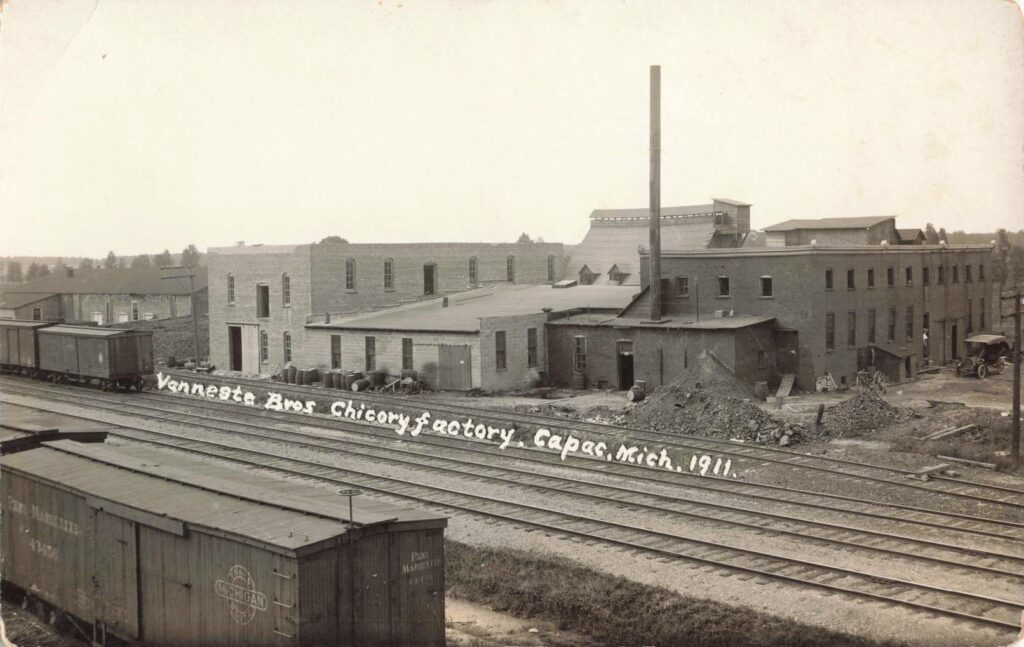
One specialty crop was chicory, a coffee substitute: a 1911 postcard reveals the Vanneste Brothers’ chicory mill operating in town. Workers roasted and bagged chicory root in wooden vats, ready for market. Peat moss was another local resource.
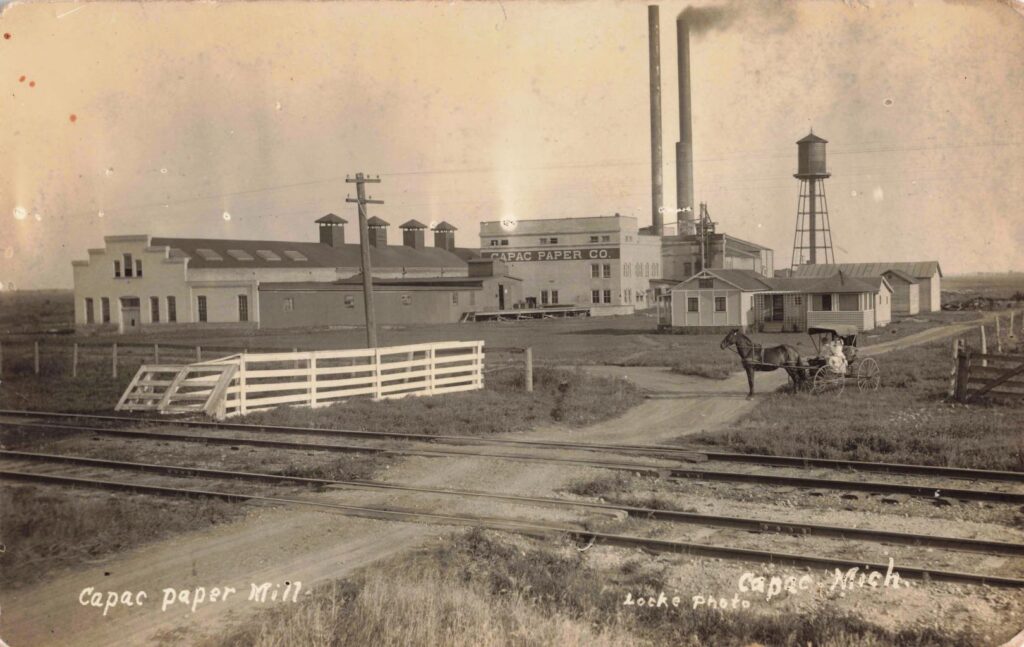
In 1903 the American Peat Fuel Company set up near Capac to harvest bog peat for fuel and paper-making. By 1908 this plant became the Pilgrim Paper Company, using peat to manufacture paper. In fact, postcards also advertise the Capac Paper Mill (sometimes called the Capac Paper Company) in town. These mills and factories – modest smoke-stacks dotting the skyline – provided jobs and diversified the economy beyond farming.
Main Street and Motor Age
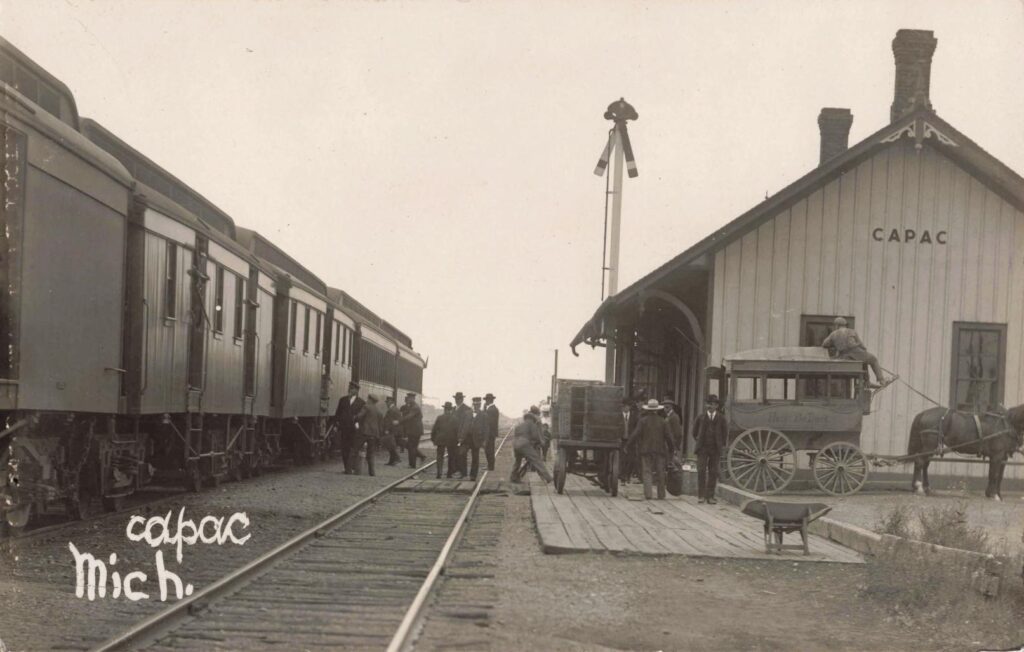
Along Main Street, commerce bustled between the railroad and depot. Wood-frame and brick storefronts sat shoulder-to-shoulder: a hardware store, a grocer, a blacksmith, all lit by gas lamps at night.
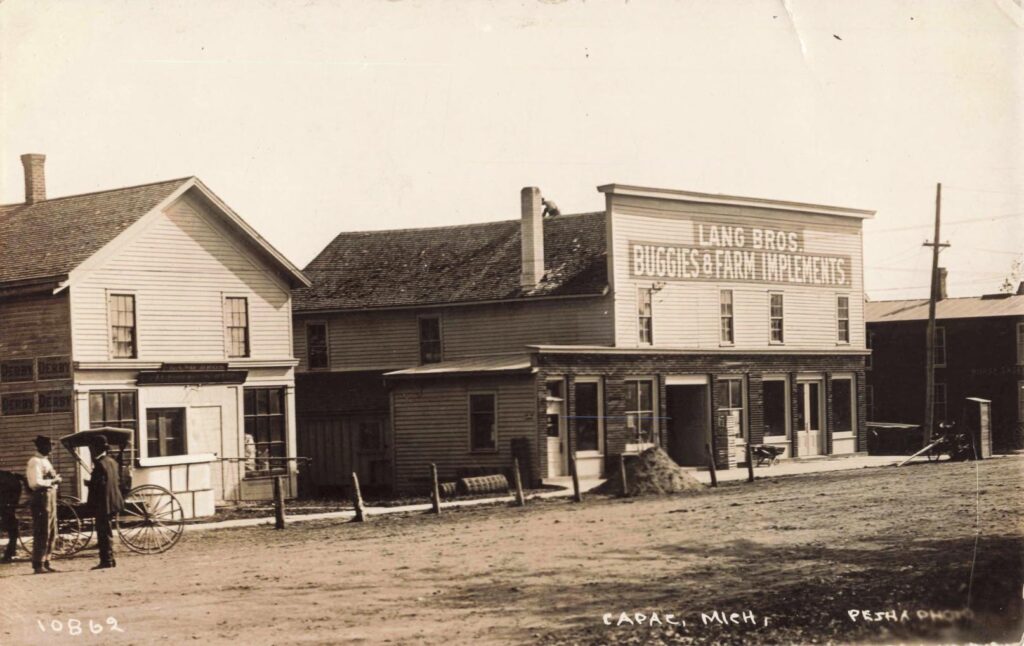
Prominent among them was Lang Brothers Buggies & Farm Implements, a shop where farmers bought wagons and tools. (Early autos were just beginning to appear on the dirt roads.)
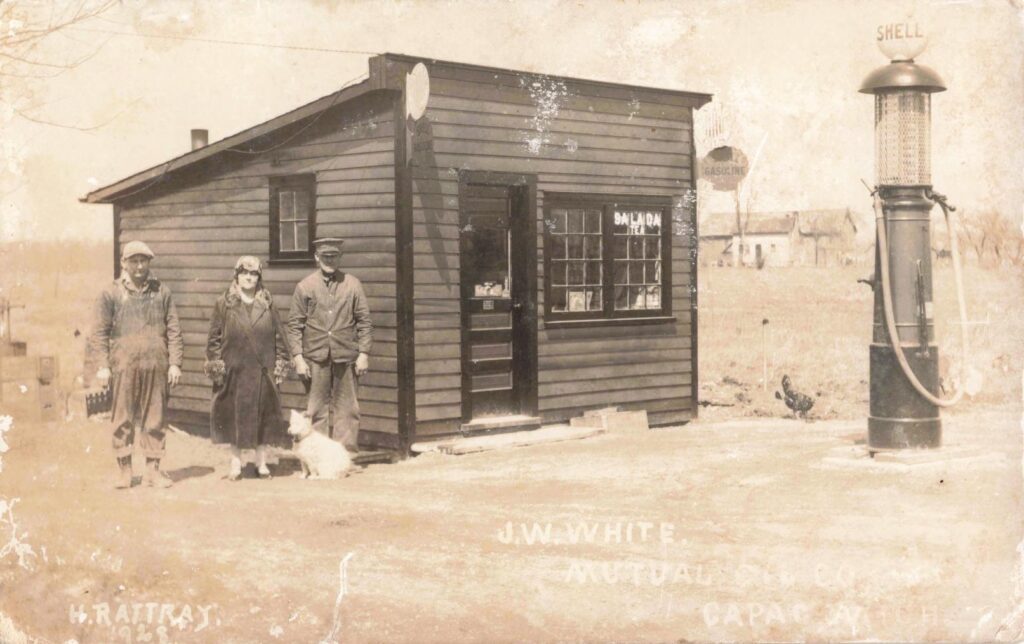
By the late 1920s, even gasoline was sold here: one period postcard shows J.W. White Mutual Oil Co., a local Shell gasoline station. Attendants in shirtsleeves pumped fuel into Model Ts as the era of the automobile dawned. Through all these scenes – the depot master waving flags, the hotel clerk polishing glasses, the banker counting out bills – one feels the rhythms of a railroad village. The grand trees and simple wood sidewalks, the clatter of hooves on Main, and the billowing train smoke create a living portrait of small-town life.

